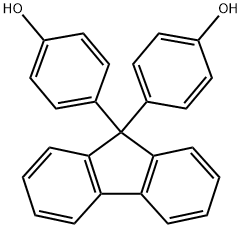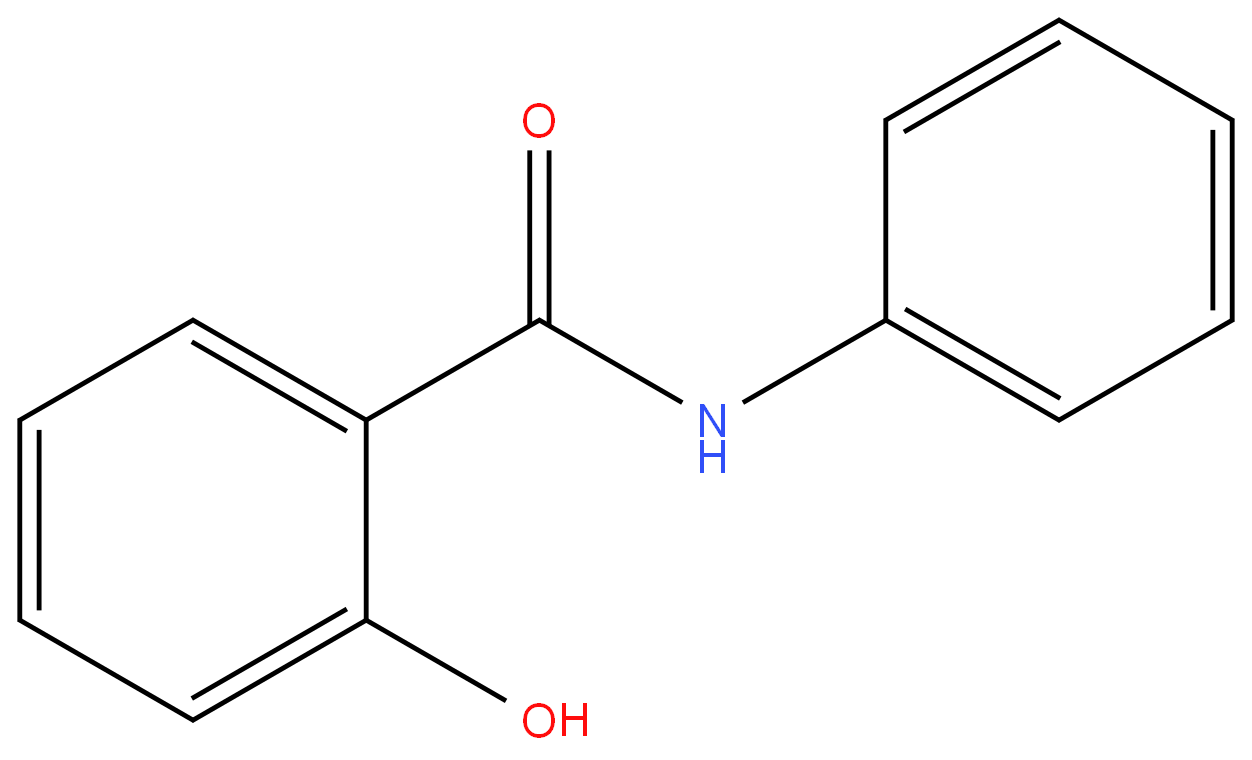Salicylanilide
Synonym(s):Salicylanilide;2-Hydroxy-N-phenylbenzamide;ASK;CDC7L1;CHIF
- CAS NO.:87-17-2
- Empirical Formula: C13H11NO2
- Molecular Weight: 213.23
- MDL number: MFCD00002212
- EINECS: 201-727-8
- SAFETY DATA SHEET (SDS)
- Update Date: 2025-09-25 17:15:13

What is Salicylanilide?
Chemical properties
greyish-brownish powder
The Uses of Salicylanilide
Salicylanilides are compounds of varying biological activity ranging from anti-inflammatory agents to antiviral and antimicrobial agents.
The Uses of Salicylanilide
antipyretic, fungicide
The Uses of Salicylanilide
Anti-mildew, fungicide.
Definition
ChEBI: An amide of salicylic acid and of aniline; it is therefore both a salicylamide and an anilide.
General Description
Salicylanilide inhibited mycobacterial isocitrate lyase (ICL) and showed a significant antimycobacterial effect.
Hazard
Toxic by ingestion, irritant to skin.
Properties of Salicylanilide
| Melting point: | 136-138 °C (lit.) |
| Boiling point: | 353.22°C (rough estimate) |
| Density | 1.1544 (rough estimate) |
| refractive index | 1.5700 (estimate) |
| storage temp. | Store below +30°C. |
| solubility | H2O: slightly soluble |
| form | buffered aqueous glycerol solution |
| pka | 7.11±0.10(Predicted) |
| color | White to Almost white |
| PH | 7-7.5 (50g/l, H2O, 25℃) |
| Water Solubility | SLIGHTLY SOLUBLE |
| Merck | 14,8330 |
| BRN | 1108135 |
| CAS DataBase Reference | 87-17-2(CAS DataBase Reference) |
| NIST Chemistry Reference | Benzamide, 2-hydroxy-N-phenyl-(87-17-2) |
| EPA Substance Registry System | Salicylanilide (87-17-2) |
Safety information for Salicylanilide
| Signal word | Warning |
| Pictogram(s) |
 Exclamation Mark Irritant GHS07  Environment GHS09 |
| GHS Hazard Statements |
H315:Skin corrosion/irritation H319:Serious eye damage/eye irritation H335:Specific target organ toxicity, single exposure;Respiratory tract irritation H411:Hazardous to the aquatic environment, long-term hazard |
| Precautionary Statement Codes |
P261:Avoid breathing dust/fume/gas/mist/vapours/spray. P264:Wash hands thoroughly after handling. P264:Wash skin thouroughly after handling. P271:Use only outdoors or in a well-ventilated area. P273:Avoid release to the environment. P302+P352:IF ON SKIN: wash with plenty of soap and water. P305+P351+P338:IF IN EYES: Rinse cautiously with water for several minutes. Remove contact lenses, if present and easy to do. Continuerinsing. |
Computed Descriptors for Salicylanilide
New Products
Indole Methyl Resin tert-butyl 9-methoxy-3-azaspiro[5.5]undecane-3-carboxylate Boc-His(Boc)-OH 2-CTC Resin 4-Chloro-7-tosy1-7Hpyrrolo[2,3-d]pyrimidine 5,7-Dibromo-1H-indole 2,5-dichloro-N-hydroxy-4,6-dimethylpyridine-3-carboximidamide 2,2-Dimethoxy-7-azaspiro[3.5]nonane hydrochloride 4-chloromethyl-5-methyl-1,3-dioxol-2-one (DMDO-Cl) R-2-BENZYLOXY PROPIONIC ACID 1,1’-CARBONYLDIIMIDAZOLE 1,1’-CARBONYLDI (1,2-4 TRIAZOLE) N-METHYL INDAZOLE-3-CARBOXYLIC ACID 4-((2-hydroxyethyl)thio)benzoic acid 1-(TERT-BUTOXYCARBONYL)-2-PYRROLIDINONE Methyl 6-methylnicotinate 3-Pyridineacrylic acid tert-Butyl carbazate TETRAHYDRO-2H-PYRAN-3-OL 2-((4-morpholinophenylamino) (methylthio) methylene) malononitrile 3-(4-morpholinophenylamino)-5-amino-1H-pyrazole-4-carbonitrile 2,4-dihydroxybenzaldehyde 1,3-Diethyl-1,3-Diphenylurea Methyl 2-methylquinoline-6-carboxylateRelated products of tetrahydrofuran








You may like
-
 87-17-2 Salicylanilide 98%View Details
87-17-2 Salicylanilide 98%View Details
87-17-2 -
 87-17-2 98%View Details
87-17-2 98%View Details
87-17-2 -
 87-17-2 Salicylanilide 98%View Details
87-17-2 Salicylanilide 98%View Details
87-17-2 -
 Salicylanilide 98.00% CAS 87-17-2View Details
Salicylanilide 98.00% CAS 87-17-2View Details
87-17-2 -
 Salicylanilide CAS 87-17-2View Details
Salicylanilide CAS 87-17-2View Details
87-17-2 -
 Salicylanilide 95% CAS 87-17-2View Details
Salicylanilide 95% CAS 87-17-2View Details
87-17-2 -
 Anti-Dbf4 antibody produced in goat CASView Details
Anti-Dbf4 antibody produced in goat CASView Details -
 Thiourea 99% ARView Details
Thiourea 99% ARView Details
62-56-6
Statement: All products displayed on this website are only used for non medical purposes such as industrial applications or scientific research, and cannot be used for clinical diagnosis or treatment of humans or animals. They are not medicinal or edible.
